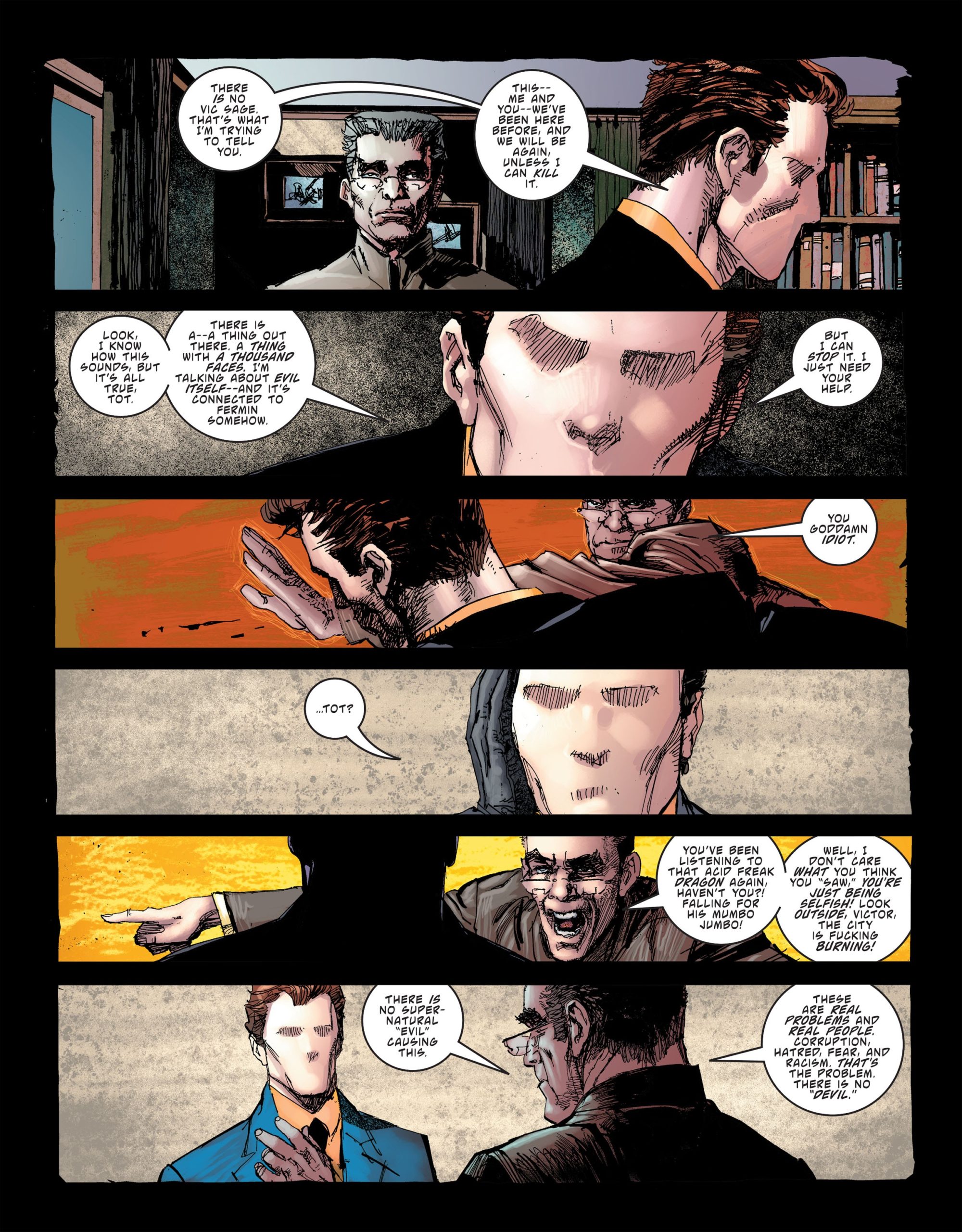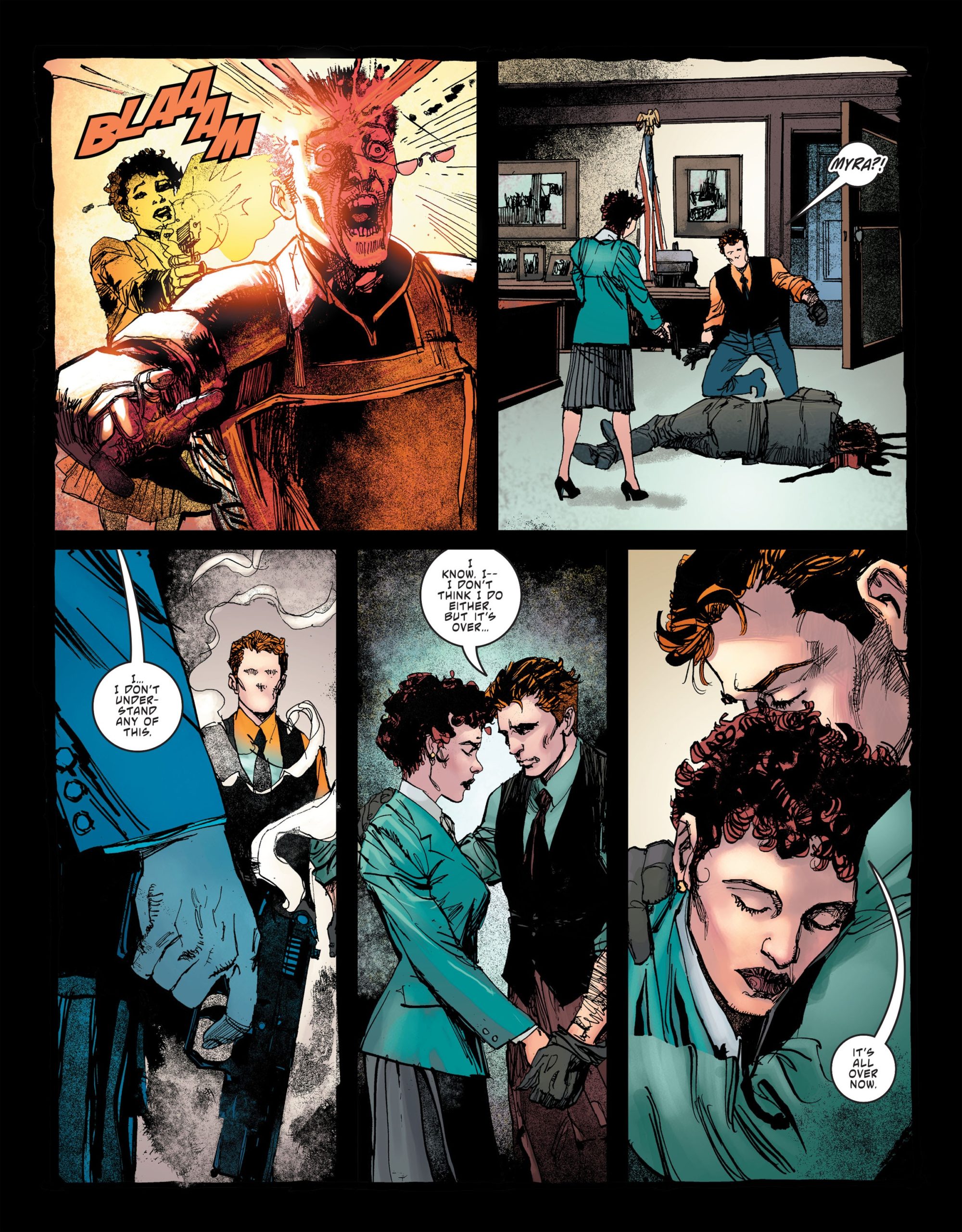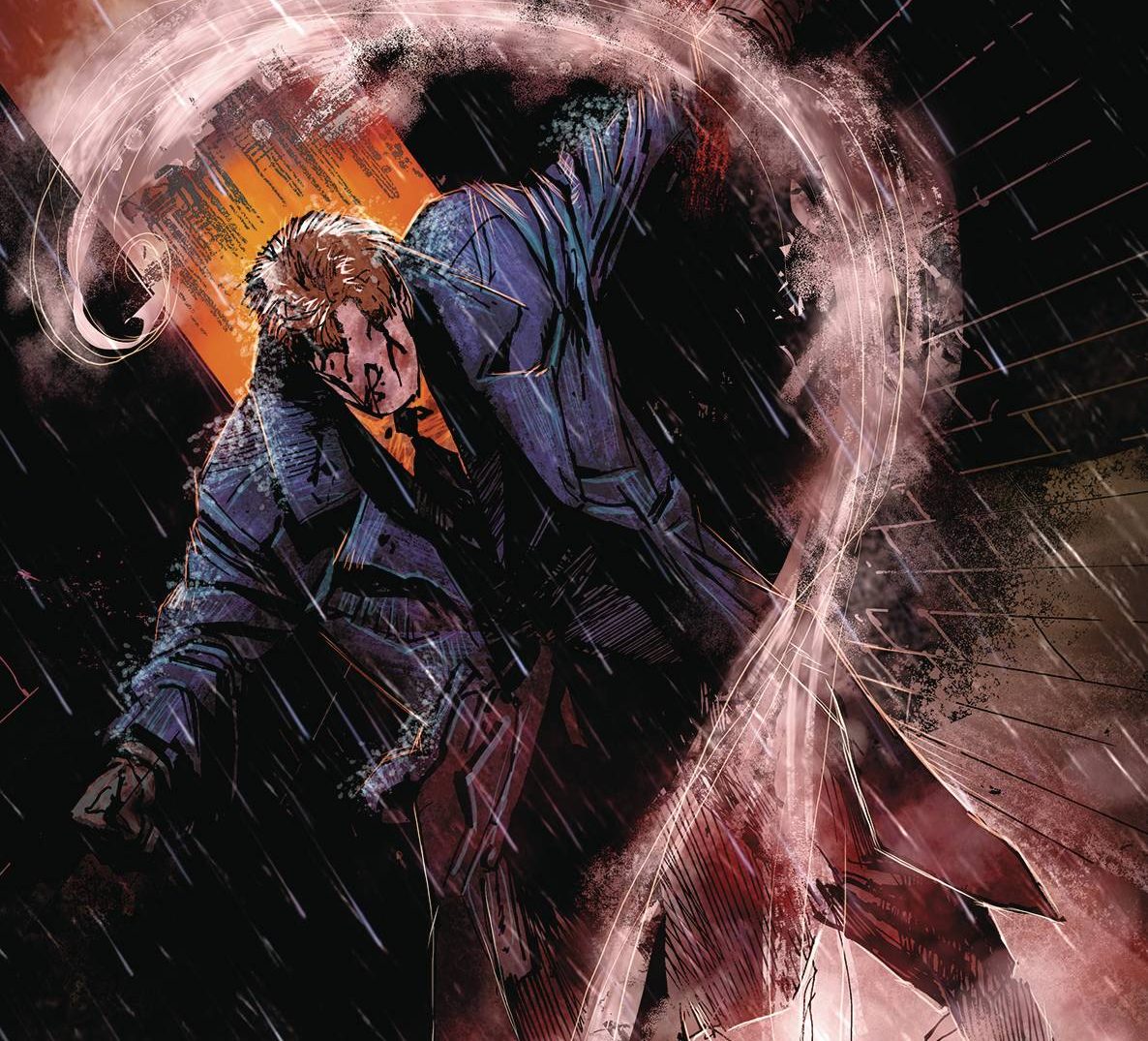Table of Contents Show
The Question: The Deaths of Vic Sage #4 brings this Black Label miniseries by Jeff Lemire and Denys Cowan to a close. It reiterates and expounds on the themes explored in both this series and some of what was touched upon in the late great Dennis O’Neil’s and Denys Cowan’s run on the character back in the 80s. Does the overall story leave an impact and how does it fare in the landscape of other stories featuring Vic Sage? That is the question.
Questioning Humanity
Throughout this miniseries, we have seen various versions of Vic Sage live a life of regret, sadness, and eventually redemption, only to be killed by what appears to be the physical manifestation of evil. But as with everything, that is merely what it appears like on the surface and is only partly true.
What we were really seeing is how no matter how many things change; they always stay the same. Hub City and Vic himself, have not changed all that much throughout history. Certain surface-level aspects of them certainly change, but Vic has always remained a temperamental man seeking to be better, and Hub City remains a crumbling ruin of hatred and sin.

When a status quo like this is maintained, nothing is fixed, and things only get worse. Thus, people can take advantage of the situation, giving rise to truly despicable acts of cruelty and villainous people. But it’s all about being enabled. The point of The Question: The Deaths of Vic Sage #4 is hammered home in a not very subtle way, but it is a point I feel needs to be heard by a lot of people.
Good and evil are within the reach of anyone and anything, they just need a push, to be enabled to get there. So, in crumbling cesspools like Hub City, the citizens are being enabled to act on their worst impulses. Meanwhile, Vic is being enabled by Tot and the alter ego of The Question to bring out his best impulses.
Human beings are infinitely malleable creatures, that is both our strength and our weakness. Evil is evil, yes, but what shape evil takes can be all too familiar sometimes. We, each within ourselves, can do horrible things because our emotions get the better of us, or we can do good things for the same reason. The world is a very confusing place and so are the people that inhabit it.
So, when Vic thinks he has killed the “devil” that has been haunting him these four issues, all he has really done has stopped a bullet that has already been fired. The “devil” enabled the citizens to do evil things, so they did. There was no good, there was no evil, just people, and people did as they wanted for good and for ill.
How Does This Series Compare To Previous Ones?
This entire miniseries has taken various things from The Question mythos, changed them, broke them apart, analyzed them, and put them back together again. While it was doing its own thing with the characters, it still had a fundamental understanding of who they were as people to make them at least believable as a slight alternative take for a long-time fan. So, it gets a pass from me on that front where some other Question miniseries in the past, such as the one from 2005 or the New 52, did not. So, in the rankings of where this lies in the pantheon of Vic Sage stories, it fares quite well.

However, I do take issue with certain things in this series. It touches on several of the same themes of the Dennis O’Neil’s run but doesn’t analyze them to its full extent like that series did. This is partly the fault of length, this is a four-issue miniseries, whereas O’Neil’s Question run was 36 issues plus a few annuals, quarterlies, and one-shots. The message at the end of this series, while a bit heavy-handed, was one I really liked, and I would have preferred a more in-depth look at the moral ambiguity of humanity by adding just a few extra issues.
The other issue I take with this series, comes to a head in The Question: The Deaths of Vic Sage #4. The time jumping in #2 and #3 served the greater purpose of explaining the overall theme of things stay the same and never seem to change. All fine and dandy, however, the modern-day Vic is the one we spend the most time with and yet I feel like I understand him very little compared to the well-drawn past versions of him. Sure, they are ostensibly the same person as I mentioned above, but certain traumas they experienced made them also feel unique compared to the modern-day Vic. Once again, this could have been fixed with a slightly longer miniseries.
The Question: The Deaths of Vic Sage #4 Leaves You With Questions, But That’s How It Should Be
The Question: The Deaths of Vic Sage #4 is overall, a satisfying conclusion to this miniseries. Was it the miniseries I was hoping for since its announcement? No. Was it perfect in execution? No. Was it enjoyable? Yes. Did it have a satisfying thematic message and philosophical point like all Question stories should? Absolutely. So in the end I have to say that this series may have some flaws in my eyes, but it’s probably the best introspective Question story we have had in a while, and Denys Cowan’s art just seals the deal as making it feel special.
